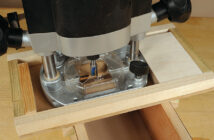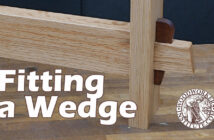Working with Router Trimmers:
Small can sometimes be very practical.
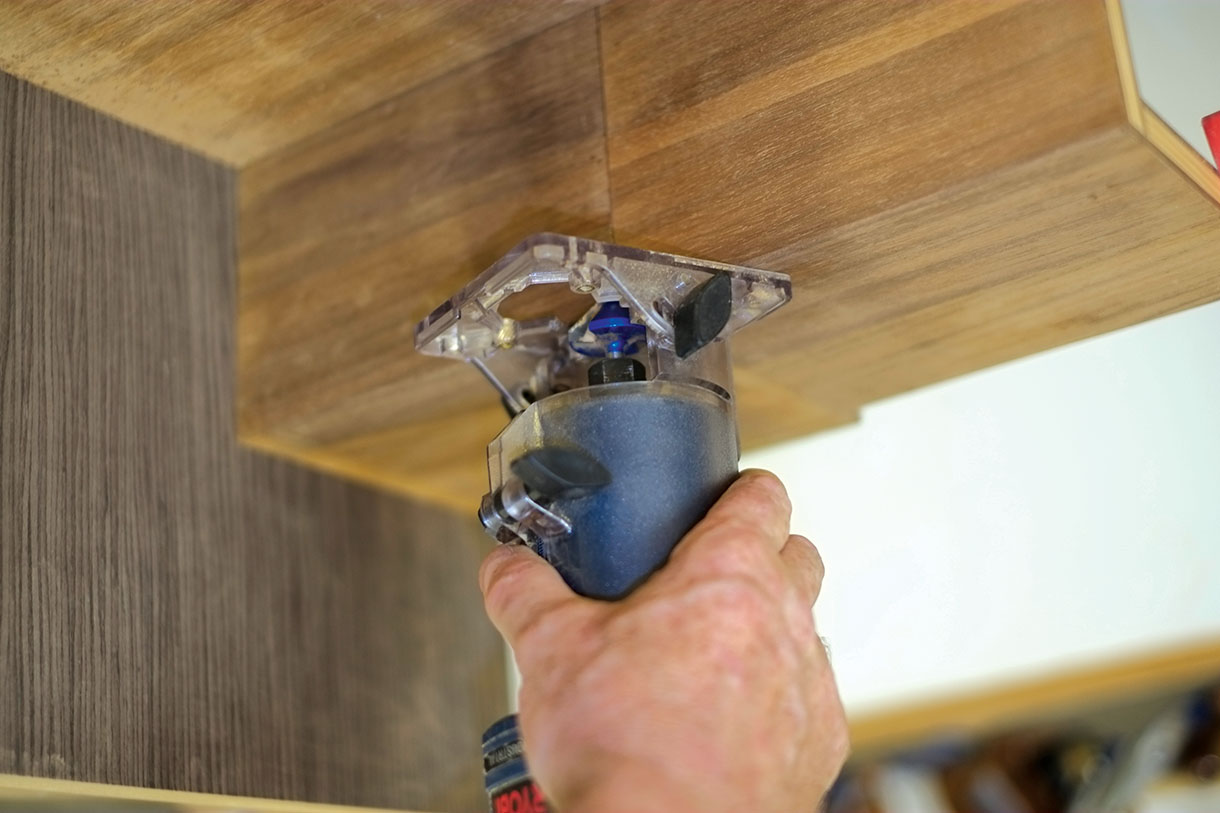
Working overhead is easy holding a small router
The trimmer, laminate trimmer or palm router, whatever you call it, is basically a small 1/4in machine designed for one-handed use. Once intended for specialist use, they can now often take centre stage when freehand routing. Larger routers, even the smaller versions can be a bit of lump to hold and manoeuvre when all you want to do is round over an edge or do a ‘stopped’ chamfer. When I did site work years ago, it was very handy being able to clean up the raw edges of a wood-panelled room working vertically or even overhead without the weight and encumbrance of a big machine and possible risk of damage to surrounding woodwork.
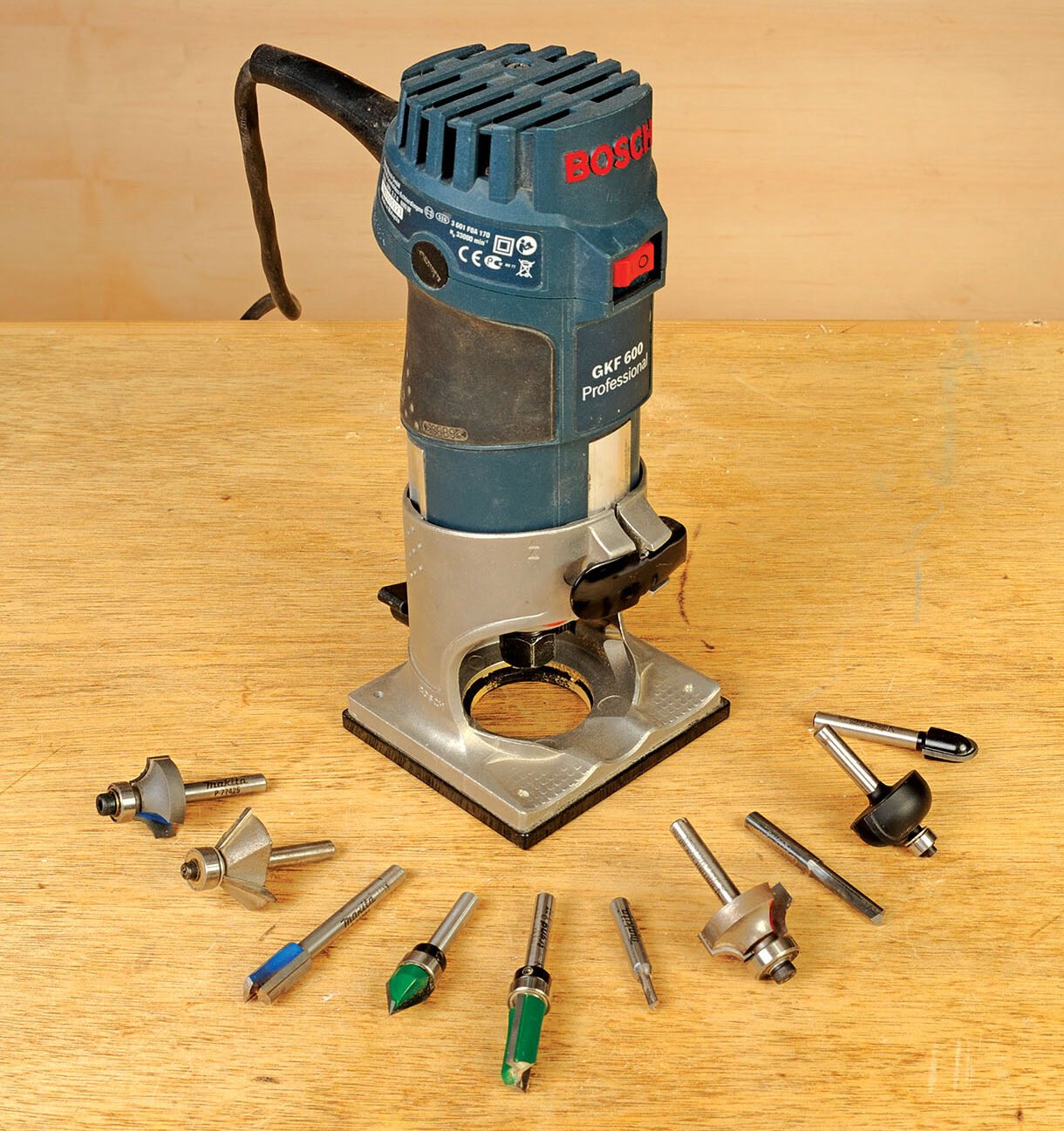
Varieties of cutter types are more limited but still cover a range of useful tasks
A trimmer may only work in a fixed vertical mode, more expensive versions can have interchangeable bases including a tilt base enabling a bevel cut using a straight cutter for example. Some models may have fence options or a roller guide for following a shaped template or carcase. These are not essential for the main run of jobs however.
The thing I love about a trimmer is being able to quickly insert a cutter, do a brief test cut, adjust and go! Then it is down to careful one-handed control putting a finished edge on a piece of work. The small base size means you can apply even a very tiny bevel successfully to an edge because it sits better on surfaces. All work should have the arrises (meeting corner surfaces) ‘broken’ for appearance and safety avoiding splinters, this is a good way to do that neatly.
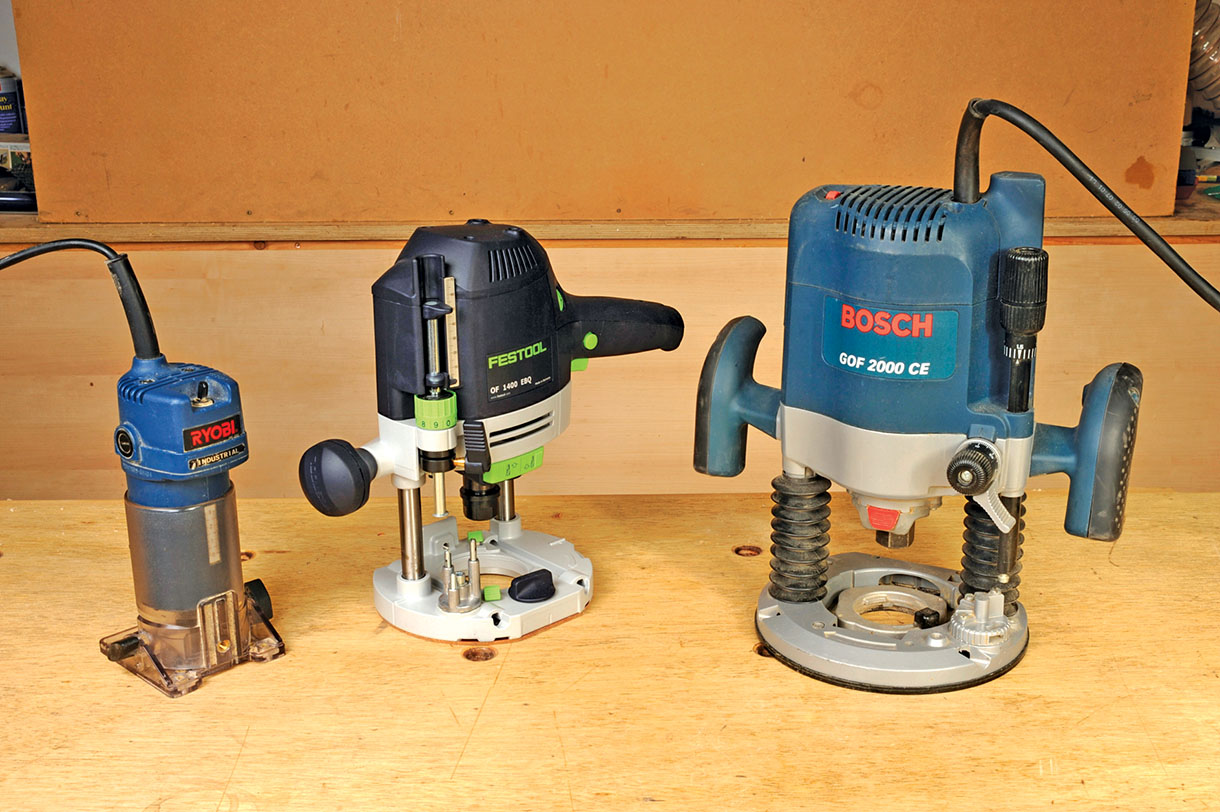
The size difference between router types can be substantial
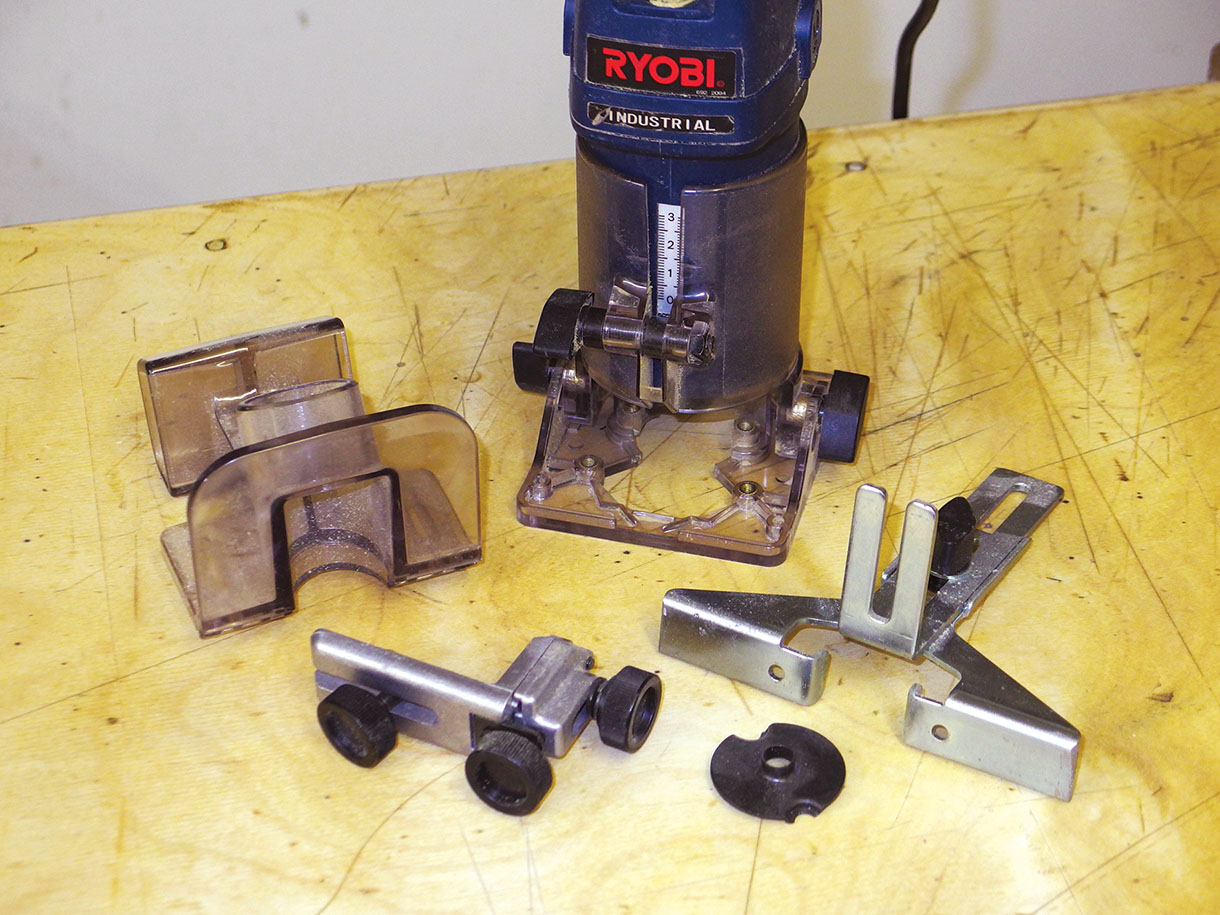
This professional model has everything – fence, roller guide, edge trimming fence and even a tiny guide bush
There is a limit on cutter diameters usually constrained by the cutter opening. It isn’t a substitute for a standard router. However if a cutter is just a fraction large for the plastic baseplate opening I have been know to carefully plunge by unlocking the motor body so it increases the opening slightly. The cutter range is limited to straight, roundover, cove and bevel rather than fancy profiles. Even so this covers quite a lot of applications.
Remember there is no plunging facility so if you need to do stopped cuts with such a small base area the machine needs to be rested on one edge against a batten for a fence and gradually tilted upright. Strictly good only for shallow cuts though.
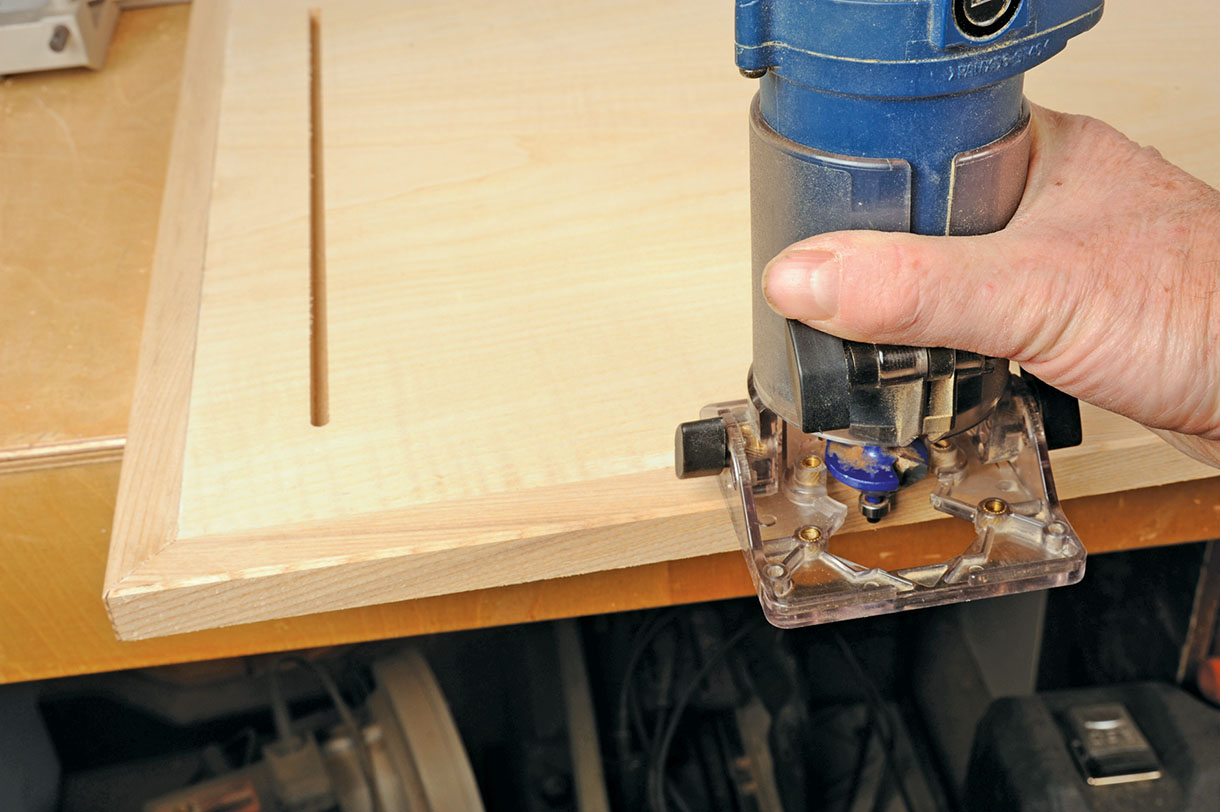
Breaking an arris (removing a corner) is almost ‘touch and go’ routing
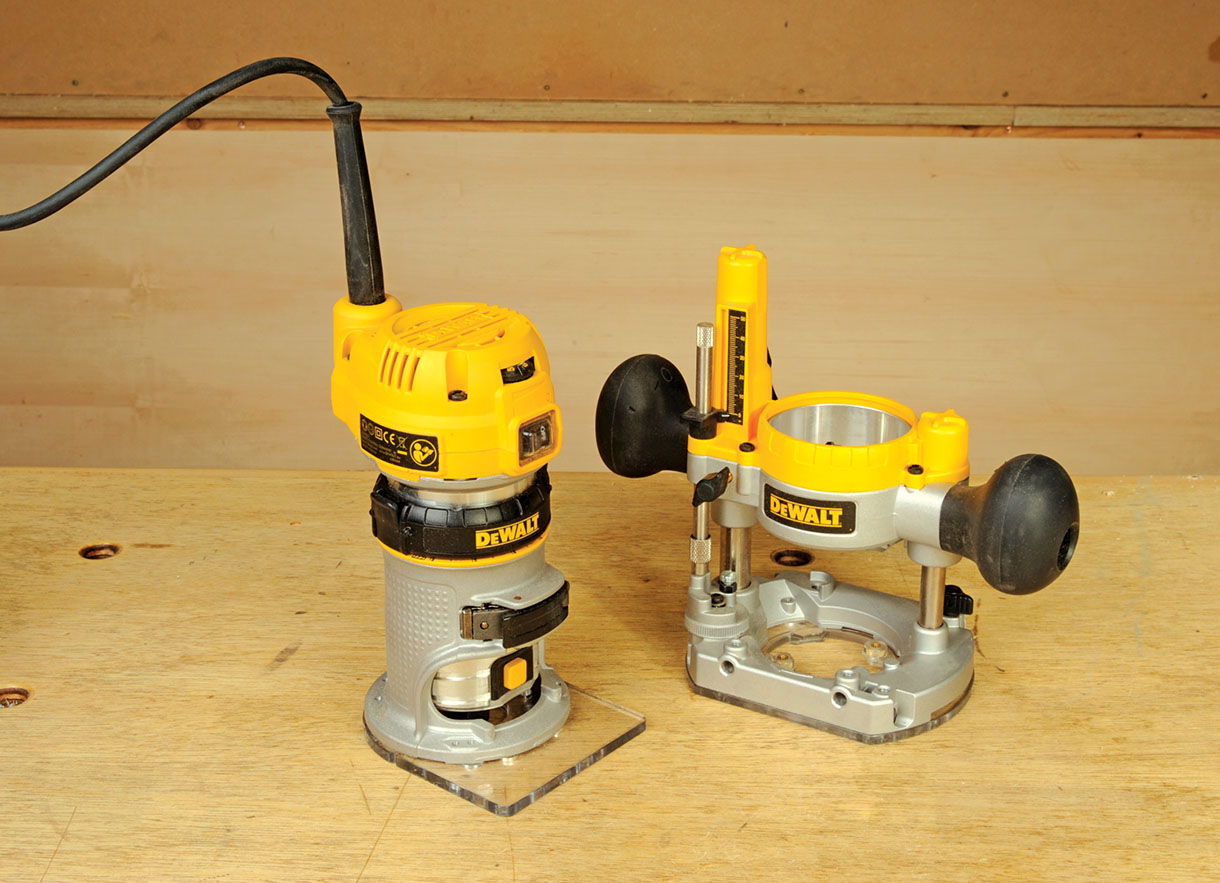
More recently router trimmers have ‘grown up’, this one is a swap base model turning it into a standard router
When making deep passes you need to reset the depth each time rather than doing one heavy pass. Make sure you have done each pass in its entirety before resetting so the cuts are consistent especially the last pass to a finish.
Dust extraction is generally not possible because there isn’t an effective way to fit it. Light edge machining doesn’t create too much waste but do wear PPE for your own protection. A trimmer and clutch of cutters take up very little space in your toolbag, great for taking to jobs that need finishing off.
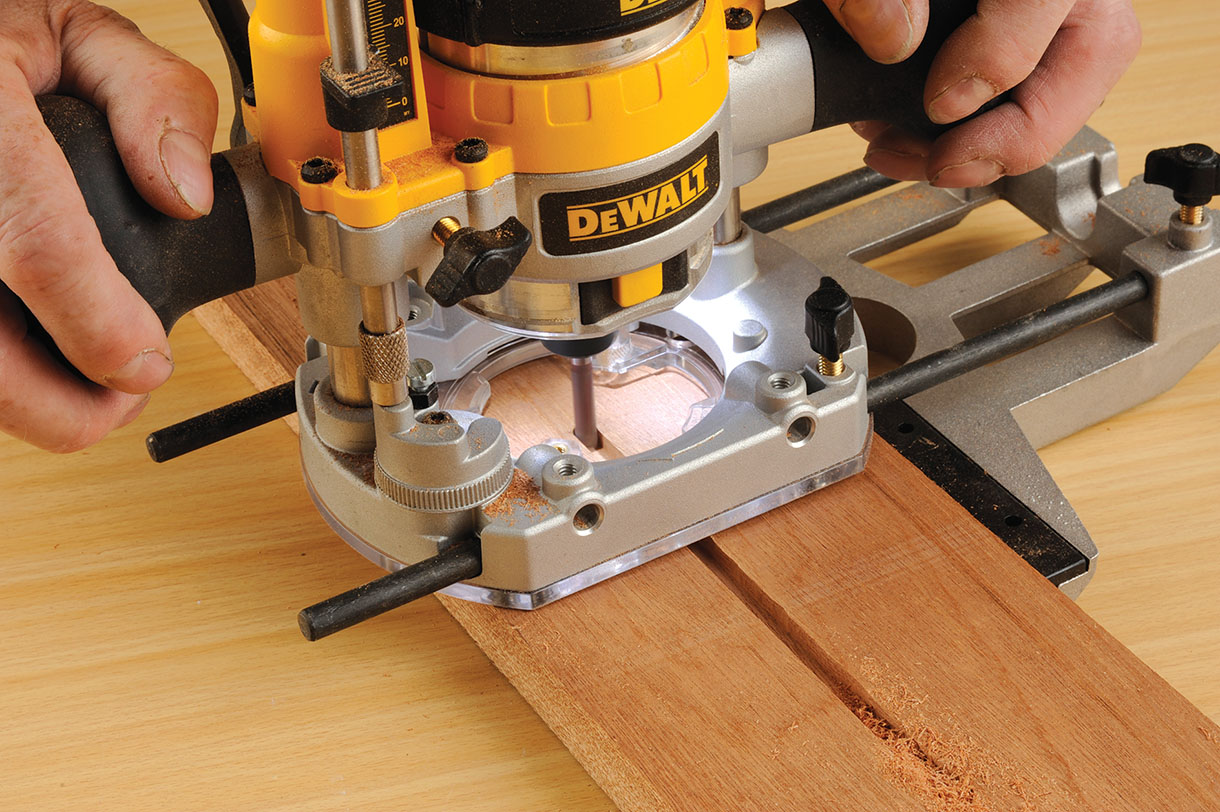
Here the swap base machine is guided by a straight fence for accurate slotting


